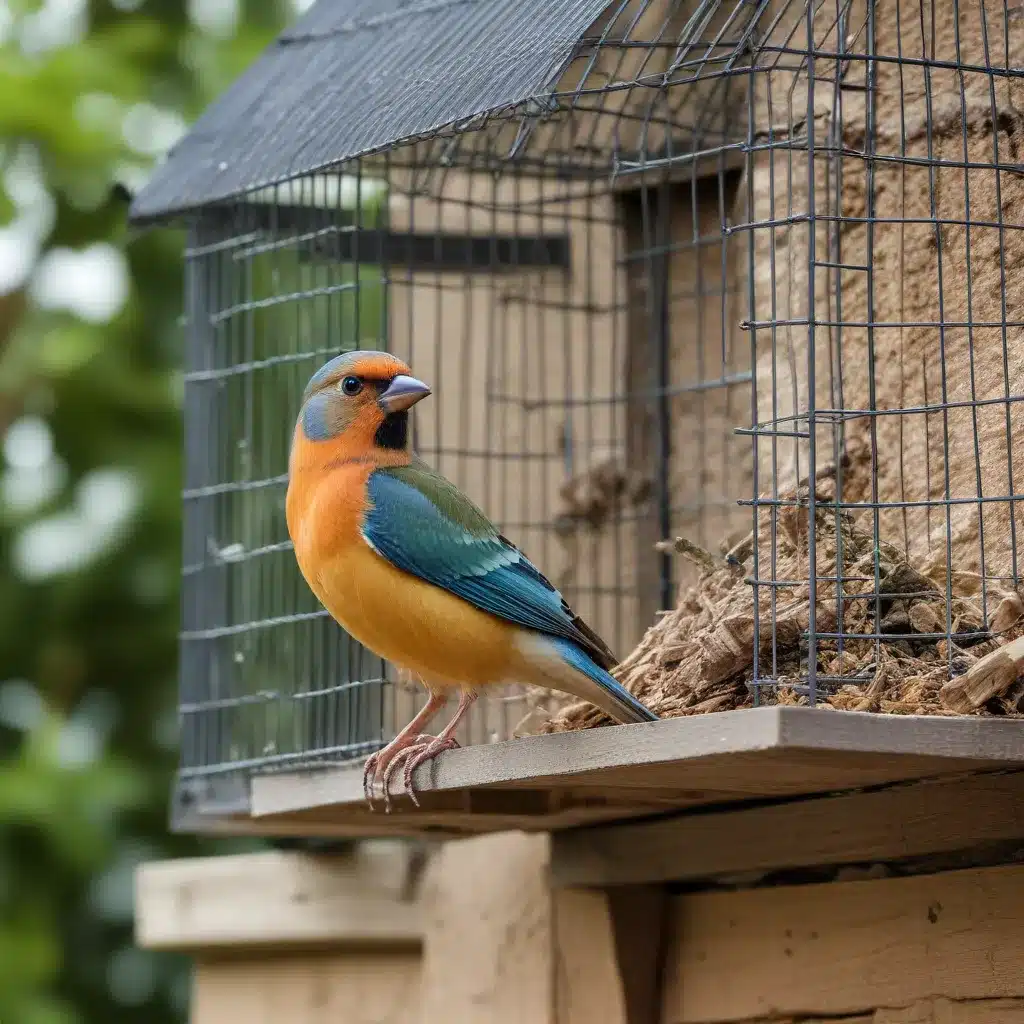
As an experienced avian caretaker and expert in all things feathered, I’ve seen it all when it comes to the joys and challenges of living alongside our fine-feathered friends. Whether you’re a devoted bird parent or simply want to coexist harmoniously, bird-proofing your home is an essential skill that can make all the difference.
Avian Inhabitants
Types of Household Birds
From the cheerful chirping of canaries to the regal grace of parrots, the world of household birds is vast and varied. While some may opt for the classic parakeet or cockatiel, others delight in the vibrant hues and inquisitive natures of lovebirds, finches, or even the majestic cockatoo. Each species brings its own unique personality and set of care requirements, so it’s important to do your research and choose the right bird companion for your lifestyle.
Bird Behavior and Habits
Understanding avian behavior is key to creating a safe and enriching environment. From the energetic fluttering of hummingbirds to the methodical foraging of cockatiels, birds have a wide range of natural instincts and tendencies that shape their daily activities. Familiarize yourself with your feathered friend’s preferred perching spots, feeding habits, and even their distinctive vocalizations. This knowledge will help you anticipate their needs and tailor your home accordingly.
Avian Anatomy and Physiology
Beneath those stunning plumages lies a delicate and intricate avian anatomy. Birds’ hollow, lightweight bones and powerful flight muscles allow for incredible aerial maneuverability, but also make them surprisingly fragile. Sharp beaks, nimble talons, and sensitive feathers all require special considerations when it comes to creating a bird-safe environment. Educating yourself on the unique physiology of your avian companions will empower you to make informed decisions about their care and well-being.
Home Bird-Proofing Strategies
Identifying Entry Points
The first step in bird-proofing your home is to conduct a thorough inspection, identifying potential entry points for your feathered friends. Look for any openings or gaps larger than a quarter-inch, as these can easily accommodate even the smallest of birds. Pay close attention to windows, vents, chimneys, and any spaces around doors or cabinets. Seal these potential access points with weatherstripping, caulk, or sturdy mesh screens to prevent unwanted avian visitors.
Sealing and Securing
Once you’ve located the entry points, it’s time to get to work sealing and securing your home. Use high-quality sealants and reinforced coverings to ensure a lasting, bird-proof barrier. Consider installing window guards or netting to prevent accidental collisions, and make sure all doors and windows close tightly. For larger openings, such as chimneys or attic vents, invest in specialized bird-deterring devices like metal screens or cap-style covers.
Deterring Birds
In addition to physical barriers, there are various humane deterrents you can employ to discourage birds from attempting to enter your home. The judicious use of visual cues, like reflective streamers or predator decoys, can signal to birds that your space is off-limits. Strategically placed ultrasonic devices or motion-activated sprinklers can also deter avian intruders without causing them any harm.
Avian-Safe Home Design
Architectural Considerations
When designing or renovating your home, it’s important to keep the needs of our feathered friends in mind. Opt for window materials that minimize glare and reflections, which can disorient birds and lead to collisions. Consider incorporating architectural features, like overhanging eaves or recessed windows, that provide shade and shelter for perching birds. And be mindful of the placement of feeders, baths, and other bird-attracting elements, ensuring they are positioned away from high-traffic areas.
Landscaping Choices
The outdoor spaces surrounding your home can also play a crucial role in creating a bird-friendly environment. Choose native plants and trees that provide food, shelter, and nesting sites for a variety of bird species. Incorporate water features, like bird baths or small ponds, to quench their thirst and offer a refreshing respite. Avoid the use of pesticides and herbicides, as these can be harmful to both birds and the broader ecosystem.
Indoor Perching Spots
While securing the exterior of your home is essential, don’t forget to consider the indoor spaces that your feathered friends may find appealing. Provide sturdy, bird-safe perches near windows or in designated bird-watching areas, allowing your avian companions to comfortably observe the world outside. Incorporate natural elements, like branches or ropes, to encourage natural behaviors and prevent boredom.
Protecting Pets and Possessions
Safeguarding Pets
In a bird-proofed home, the safety of your feathered friends is paramount, but don’t forget about your other beloved pets. Cats and dogs, even the most well-behaved, can pose a significant threat to household birds. Ensure that any areas where birds are housed are completely inaccessible to your non-avian pets, and consider training your furry companions to coexist peacefully with their feathered housemates.
Securing Valuables
While birds may not intentionally cause damage, their natural behaviors, such as chewing or scratching, can take a toll on your home’s furnishings and valuables. Protect delicate items, like electronics or heirloom furniture, by keeping them out of reach or encasing them in bird-safe materials. Invest in sturdy, bird-proof cages, perches, and toys to channel your avian companions’ energy in a positive direction.
Maintaining Cleanliness
Avian residents require a clean and well-maintained living environment, both for their health and the preservation of your home. Regularly clean bird cages, perches, and feeding areas to prevent the buildup of droppings and debris. Incorporate air purifiers and strategic ventilation to manage odors and airborne contaminants. By staying on top of your bird-related cleaning tasks, you’ll enjoy a healthier, more harmonious living space for all.
As an experienced avian caretaker, I’ve learned that creating a bird-proofed home is an ongoing process, but one that is immensely rewarding. By understanding the unique needs and behaviors of our feathered friends, we can cultivate a safe and enriching environment that allows us to coexist in perfect avian harmony. So, take the time to explore the strategies and insights outlined here, and embark on your own avian escapade towards a bird-friendly abode. Your feathered companions will thank you for it!


